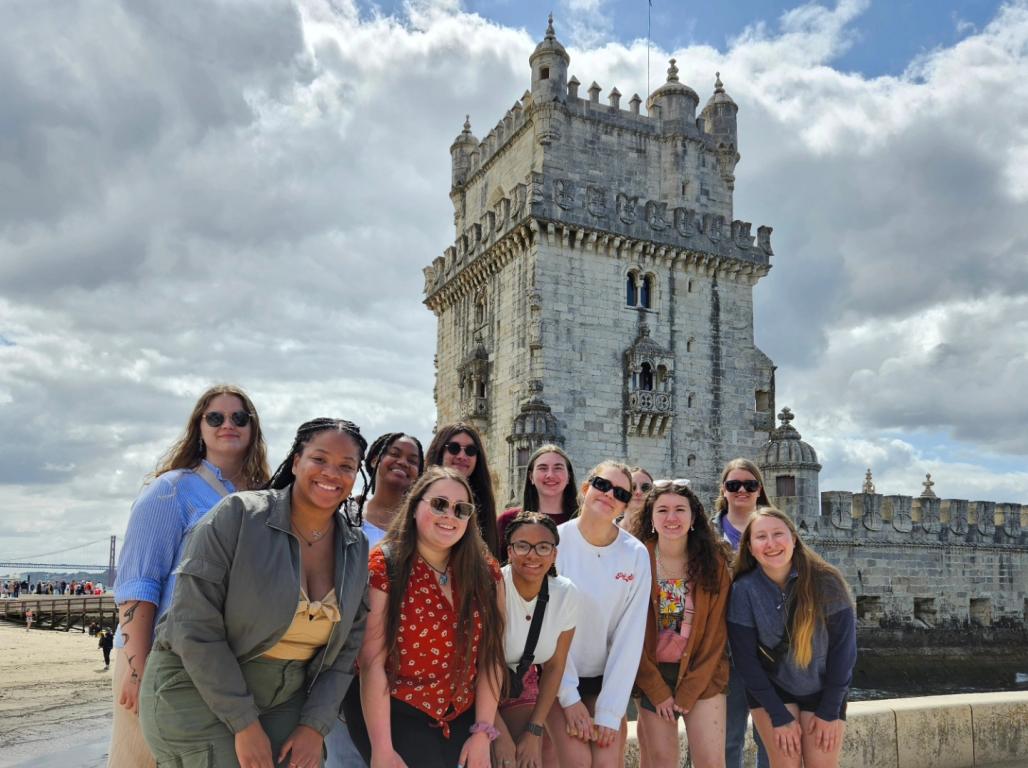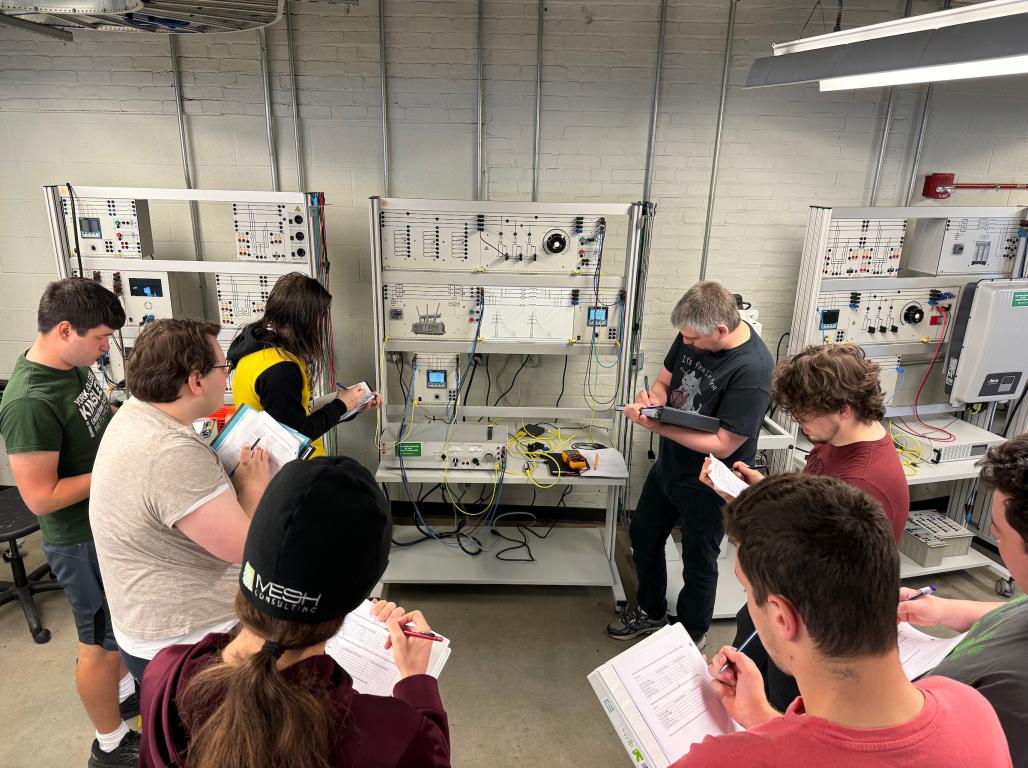Designed for Action: Junior Theatre/Mass Communication Major Assists with Social Media Project for the Urban Collaborative

At York College, students aren’t just reading textbooks and listening to lectures. They’re working on community projects, solving real-world problems, and using their education to effect change. In Designed for Action, we meet the students who are making an impact outside of the classroom.
Communication isn’t just a necessary aspect of Eva Heier ’24’s life, it’s a chosen path.
“I've always been fascinated by how we as human beings communicate and share information with each other, especially in how we get our news and process what is happening in the world,” she says.
Because of this fascination, the junior Theatre and Mass Communication major from Kingsville, MD, chose to major in Mass Communication to better understand a different side of human communication: the news cycle.
“I've always enjoyed watching the news, and through Mass Communication, I've learned all the work that goes into making the news happen on both TV and radio,” she says.
Part of that learning came from Eva’s required Introduction to New Media Course taught by Assistant Professor of Communication Madhavi Reddi, Ph.D., where she participated in a partnership with the Urban Collaborative, a donor-supported initiative of The Gunter-Smith Center for Community Engagement (CCE) that utilizes faculty and students for research with a goal of bettering and improving community health in York City.
In Dr. Reddi’s course, Eva learned about new forms of media, such as AI, and how that media affects the world. She also participated in a project that analyzed the Urban Collaborative’s glossary of words commonly used in conversations referring to accessible and affordable housing in York City.
“It is important that people understand that adequate and acceptable housing be available to everyone, regardless of race, gender, or sexuality, and that there are obstacles in their way that should not be there,” she explains.
Partnership with the Urban Collaborative
Dr. Reddi’s partnership with the Urban Collaborative originated from her desire to give students opportunities for hands-on learning that had real-world and community impacts, in accordance with York College principles.
Each of the three courses she teaches—Media and Diversity, Introduction to New Media, and Broadcast Performance—focuses on a different project with the Urban Collaborative. These projects range from news packages covering stories in York City, to exploring the possible inequitable coverage of the City by journalists, to semiotic analysis of words associated with social media coverage of the City.
“I call them client-based projects because I really want students to feel like they have that real-world experience of producing something for a client,” Dr. Reddi explains. “In the case of our work with the CCE and Urban Collaborative, a lot of students come to York College, but they may not know that much about the York community. I think that this project was a really great way to understand our community and to understand the little steps that we can take to help improve it.”
In Eva’s course, Introduction to New Media, students were responsible for creating 10 social media posts focused on terms related to affordable and accessible housing in York City.
“We were given 10 terms by the Urban Collaborative team, and those 10 terms had to do with housing insecurity, financial insecurity, and the roots of those issues. For the 10 words, my partner in class and I created 10 social media posts on any platform of our choosing to best explain and represent the term,” Eva explains.
Her social media posts highlighted racial disparities of generational wealth starting in the 1850s, as well as other terms, including “redlining,” “gentrification,” and “third place.”
“I created a ‘family tree’ that could be posted on either Twitter or Facebook that compared the generational wealth of a white family and black family beginning in the 1850s,” she says. “I highlighted the issues of how generational wealth is something that typically the majority has, and minority groups have a more difficult time building up and creating generational wealth due to the fact that the systems in America are built to oppress minority groups.”
The goal of these posts was to define what a term really means and create a definition for the Urban Collaborative to use in future projects.
“We made the posts in a way that these terms are easily understood and digestible for audiences of social media platforms. Some of the terms we're covering are affordable housing, redlining, generational wealth, and social determinants of health,” Eva says.
Preparing for the future
After graduation, Eva hopes to pursue working at either a news station, or in the business aspects of running a theater. Regardless of the path she chooses, she’s grateful to have been able to work on a project like the one for the Urban Collaborative, and especially one with real community impact.
“This was such an important and impactful project to me because I think it's necessary to use social media to help educate people on topics that they may have wrong interpretations of or no knowledge of, since social media has become much of this generation's main way of receiving and distributing information and news,” she adds. “I really appreciate that Dr. Reddi gave us a project that can genuinely have an impact, and that the Urban Collaborative team may use the posts we created in the future.”



